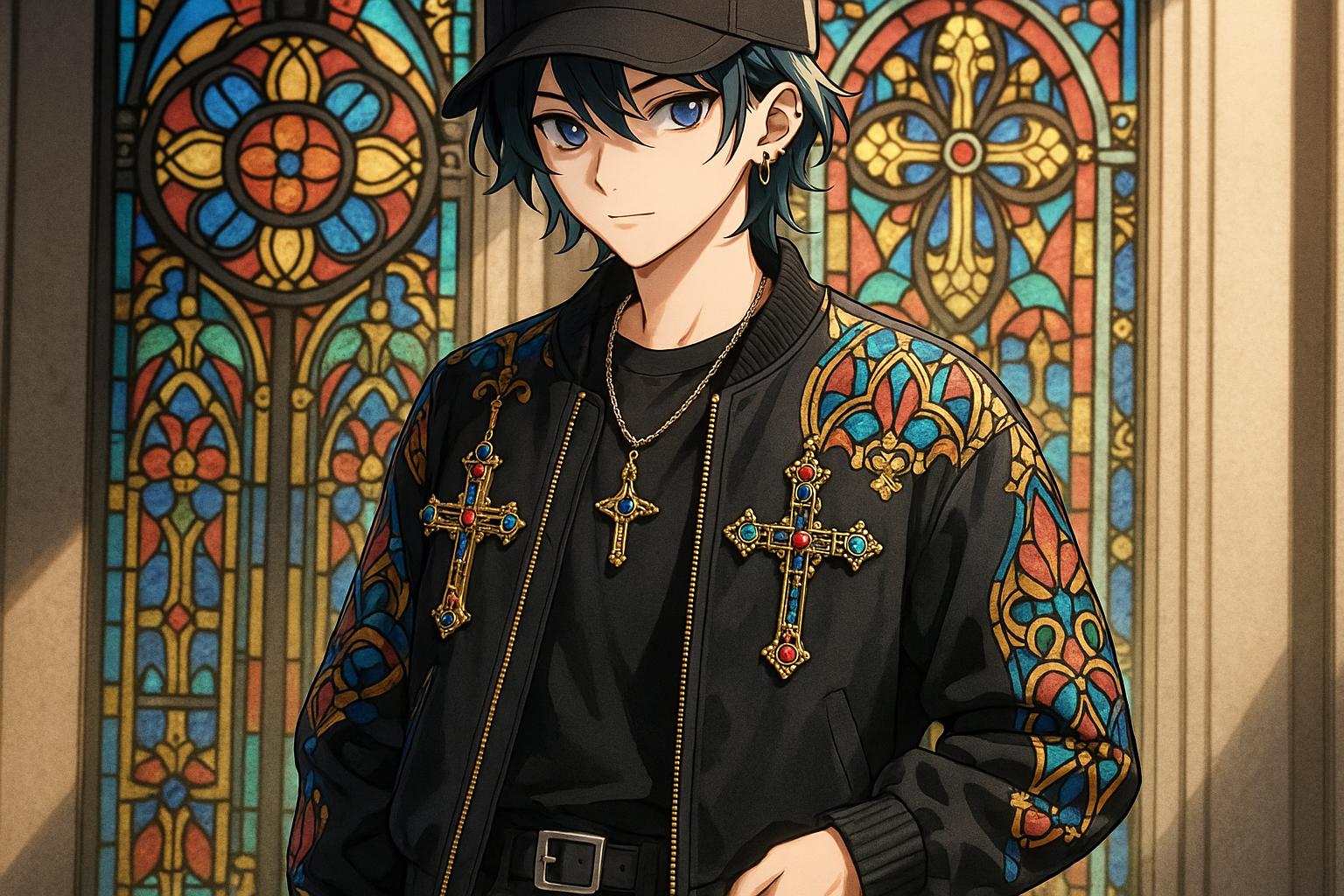All eyes have recently turned towards the Vatican, not just for the momentous occasion of electing a new pope, but also for the significant sartorial statements accompanying these events. While it might seem superficial to focus on vestments and ceremonial outfits, in an era where fashion often intersects with spiritual themes, the significance runs deeper.
The new pope's election coincides with an emerging trend in the fashion industry, where religious motifs—such as ornate crucifixes and sacred heart symbols—have gained traction long before the conclave. Labels like Who Decides War have made waves with designs featuring stained-glass window patterns, while Palace, a skatewear brand, has introduced T-shirts emblazoned with the Virgin Mary’s visage. This inclination signals a broader cultural shift, highlighting how spirituality influences contemporary style.
Recent fashion events have further illustrated this trend. At the Met Gala, attendees such as Colman Domingo showcased striking attire that evoked ecclesiastical fashion; Domingo donned a cape in striking cobalt adorned with an elaborate collar, reminiscent of religious garments. Similarly, Willy Chavarria's presentation in the American Cathedral of Paris featured models clutching rosary beads and wearing sweatshirts boldly displaying crosses, merging high fashion with spiritual symbolism.
Fashion editor Iain R Webb posits that the allure of religious iconography lies in its dramatic and ceremonial qualities. He notes historical designers like Cristóbal Balenciaga, who created sweeping silhouettes akin to cardinal cassocks, and Christian Lacroix, famed for his bejewelled crucifix jacket, as examples of this longstanding fascination. However, contemporary interpretations of religious themes seem to transcend aesthetic appeal. Webb observes a growing trend among younger generations—evidenced by a significant increase in religious belief among 18 to 24-year-olds in the UK—from 22% in 2019 to 45% in 2023.
J’Nae Phillips, a trend forecaster, highlights that this resurgence in religious-themed fashion reflects a deeper exploration of identity and heritage amidst the current era's uncertainties. Once merely provocative or ironic, the use of religious symbolism in fashion now carries a sense of genuine intent and longing for connection.
Yet, the current socio-political climate complicates these conversations. In an era where Christianity is often associated with the religious right, overt displays of faith can be fraught with contradiction. Chavarria, in a bold statement at his Paris show, chose to play a speech by the Right Rev Mariann Budde, which urged compassion towards marginalized communities. This decision illustrates a reclamation of religious symbols in fashion—utilising style to offer not only aesthetic critique but also moral clarity.
As Lucy Collins, a philosophy assistant professor at New York’s Fashion Institute of Technology, points out, there exists a growing voice among progressive people of faith feeling misrepresented by the mainstream narrative. Chavarria’s artistic choices resonate amid a desire for those within the faith community to assert a more inclusive representation of their beliefs.
This trend also dovetails with a global fascination with spirituality across various fashion weeks, from Roksanda’s nod to Serbian monasteries to JW Anderson’s playful interpretations of traditional attire. Designers are increasingly merging cultural narratives within their collections, as seen with Edvin Thompson’s Caribbean-inspired pieces and Clarence Ruth's runway show held in a church, further illustrating the entanglement of faith and fashion in shaping contemporary identities.
As the fashion landscape continues to evolve, the intertwined relationship between spirituality and personal storytelling remains potent. This phenomenon not only reflects a broader search for meaning but also indicates a cultural moment where diverse expressions of faith can coexist alongside a progressive narrative in the style domain.
The ongoing dialogue surrounding fashion's engagement with religion invites both critique and celebration, highlighting a vibrant landscape where material beauty and spiritual depth can jointly flourish.
Reference Map
- Paragraphs 1, 2, 3, 4, 6
- Paragraph 4
- Paragraph 1
- Paragraph 1
- Paragraph 1
- Paragraphs 5, 6, 7
- Paragraphs 4, 5, 6
Source: Noah Wire Services
